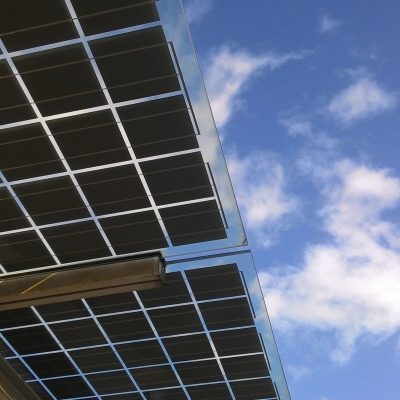With the passage of the Inflation Reduction Act (IRA), the solar landscape has changed dramatically–especially for nonprofits. Those interested in going solar are encouraged to start preparing now for an installation due to supply chain issues.
The IRA changes are good news for the planet and our need to reduce carbon emissions. They are particularly good news for churches and other nonprofits. Previously, the 30% tax credit for installing solar panels had dropped to 26% and was due to expire in 2024. Not only has it been renewed for those with tax liability; beginning in 2023, nonprofits can receive 30% as a direct payout.
“As the need for urgent climate action is becoming clearer each month, faith-based and charitable entities are now much better positioned to do their part,” said Duane Ediger, a solar installer, renewable advocate and member of Shalom Mennonite Fellowship in Tucson, Arizona.
For people with capital, installing solar panels was already financially beneficial in the long term. Nonprofits with a tenacious solar committee were able to take advantage of the 30% tax credit, but it took initiative. Some set up Limited Liability Companies themselves; others worked through for-profit companies who invested in solar; others found individuals who were willing to own the panels for a while.
Now, the financial case is even more compelling, and the process should be simpler. Installing solar panels can divert money that would have been spent on utilities to whatever mission a church or other nonprofit cares about. There are additional benefits for installing in a low income community, an indigenous nation, or in an energy community; and also for using domestic panels. Details are still being worked out.
Andy Schell, marketing manager for Paradise Energy Solutions, an East Coast solar installation company, thinks that the bill is challenging for the solar industry.
“Like almost every industry at the moment, we’re already facing global supply chain issues. The increased demand from this bill will make those more difficult, especially in the short term… It would be prudent for interested churches to start the process now, in preparation for 2023,” he reported.
Not sure how to go about installing solar panels? MCCN was nearing completion of a how-to guide for congregations going solar just as the Inflation Reduction Act passed. It has been updated in light of these changes. For a preview, See Where Do We Start? on the Mennonite Creation Care Network (MCCN) website. The complete booklet will be posted on the site by October 1.
The booklet covers the rationale for going solar, a step-by-step process, and resources such as what questions to ask solar installers. Many stories about churches are included. Writer Karla Kauffman, West Liberty, OH, interviewed 18 Mennonite congregations and multiple solar installers while compiling the guide.
Sign up here to be notified when MCCN’s solar booklet is available.
Jennifer Schrock is the director of Mennonite Creation Care Network and editor of “Considering Solar? A Guide for Churches.”
